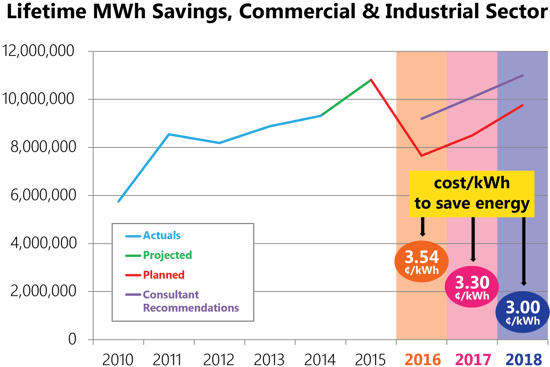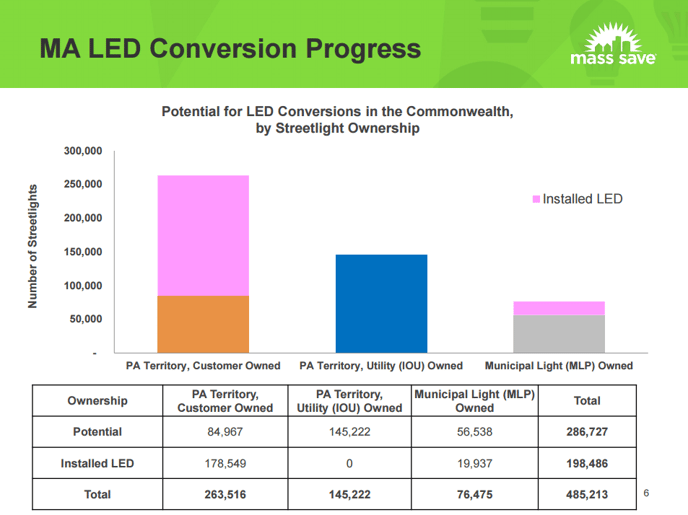Would You Like to Save Your Organization Money on Utility Bills?
If you work for a non-profit organization in Massachusetts, this survey can help. Do you think your organization...
Half-way through the first year of the 2016-2018 Efficiency Plan and utilities are on pace to be handsomely rewarded as they surpass the low goals set for themselves.

Readers of this blog know that I represent Massachusetts’ nonprofits on the state’s Energy Efficiency Advisory Council (EEAC). The EEAC is the body responsible for overseeing development and monitoring implementation of the state’s utility-run energy efficiency programs. Readers will recall that a year ago I voted against the Three-Year Plan proposed by the utilities administering energy efficiency programs.
There were several reasons why I could not endorse the final draft of the plan. Most notably because the plan included significantly decreased savings targets, but increased performance incentives.
To put a finer point on it, despite being very strong in the residential sector, the C&I goal for 2016 is 29% lower than the then-projected achievement for 2015, but the Program Administrators (PAs) stand to benefit from a whopping 25% increase in their performance incentives.
Take a look at the graph below. Note how the green line turns into a red ski slope.

The ski slope runs counter to the tale we often hear from Program Administrators (PAs) – that pushing savings too high now will eliminate opportunities later. Again, look at the graph – way up in 2015, down in 2016, and up again for 2017 and 2018.
When the utilities that administer the programs meet or exceed a certain percentage of their goal, they receive a “Performance Incentive.” This is sometimes called a “Shareholder Incentive” and refers to payment earned above their costs for running the programs. It’s a nice perk if you can get it and one way to get it is to set a low savings goal that you’ve already shown you can exceed.
At the September 2016 EEAC meeting, the PAs provided a progress report for the first half of the year. In that presentation, they demonstrated that they are currently on track to surpass the 2016 goal by 12%. It certainly appears as though the utilities are cruising their way to earning their Shareholder Incentive.
To be clear, I’m not opposed to paying the utilities performance incentives for saving energy. But those incentives should be aimed at achieving all the energy savings that cost less than buying energy. That’s good economic policy, good environmental policy, and state law. The utilities and Baker administration have yet to propose any ideas for meeting our energy needs that are less expensive than saving energy in the commercial and industrial sector. Please remember this when you hear Eversource and National Grid say that we face catastrophe unless we build that Access Northeast gas pipeline.
At the Energy Efficiency Advisory Council meeting in September, we also heard a clear message from the EEAC’s consultants that we can achieve great savings from converting fluorescent bulbs to LEDs in the C&I sector over the next few years. Most of this will happen in offices and such, but street lights happen to be in the C&I sector, too. This presents tremendous opportunity in many communities, especially where the utilities themselves own the street lights!

LEDs are great already, but the technology is evolving rapidly and the next generation will include dimming controls and automation that enable easy management of lighting according to needs and peak demand. This is the direction we should head, rather than towards the fracked methane wells of New York and Pennsylvania.
Doubling down on efficiency will require getting everything we can out of LED lighting, while also broadening our efficiency horizons to capture the benefits of those technologies that are also capable of curbing peak usage and contributing to demand response. Some technologies, like combined heat and power, smart meters and wifi thermostats, already exist and pilot programs are being developed by our utilities. Other technologies, like storage, are just on the horizon. We have the means to cut energy costs and greenhouse gas emissions. Do we have the will?
EEAC meetings are held monthly. The first ten minutes of each meeting is reserved for public comment. This is an opportunity to contribute to the conversation had at the Council and to remind councilors that we haven’t even come close to exhausting our state’s cheapest resource. Feel free to contact our Clean Energy Program Director Eugenia Gibbons to learn more about how you can engage at these meetings.
Mass Energy and People's Power & Light don't just advocate for energy efficiency on a state level, we educate individuals on how to make their own home's more efficient as well. Get savvy:
If you work for a non-profit organization in Massachusetts, this survey can help. Do you think your organization...
The Massachusetts Green Communities Act (GCA) requires investor-owned gas and electric utilities to capture all...
Comments